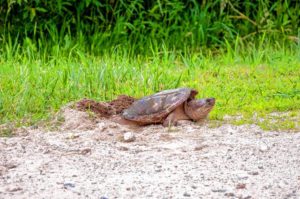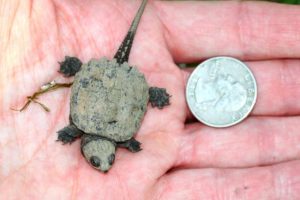(by Jane Kolias)
Early to mid-summer is when many of NH’s female turtles leave their watery homes to find suitable habitat to lay their eggs. Loose or sandy soils are preferred, requiring some turtles to travel long distances in search of the best location. 

Photos (from the top): Snapping Turtle laying her eggs in sandy soil, by the Forest Society; hatchling Snapping Turtle, by Jessica Marony.
